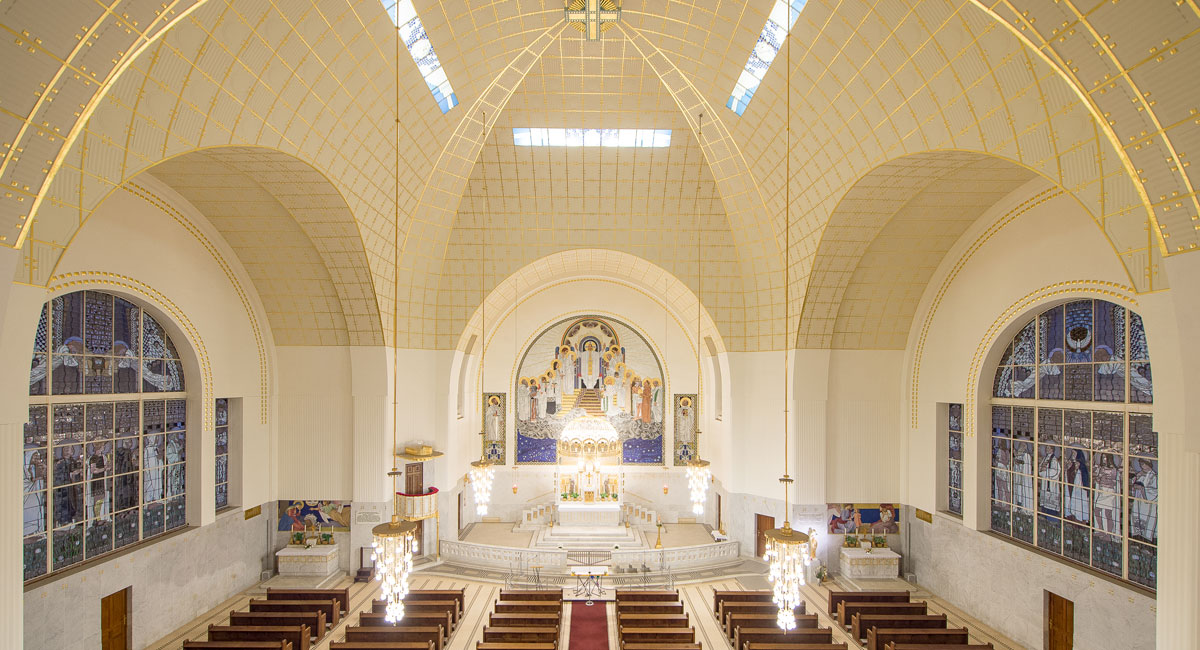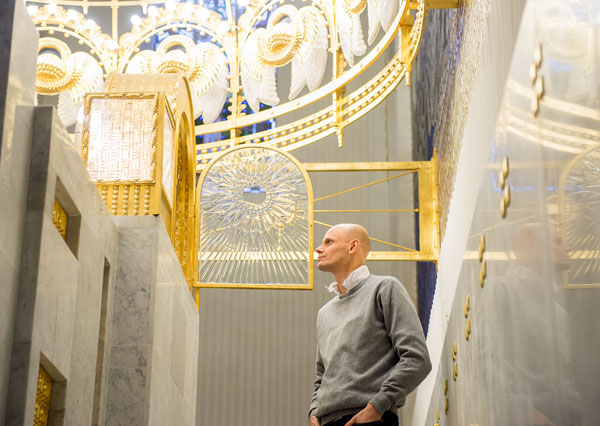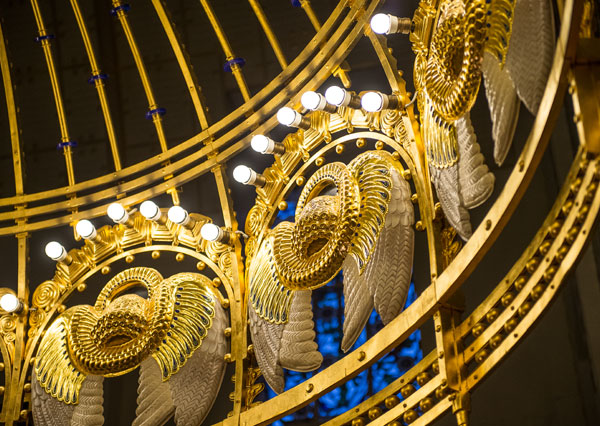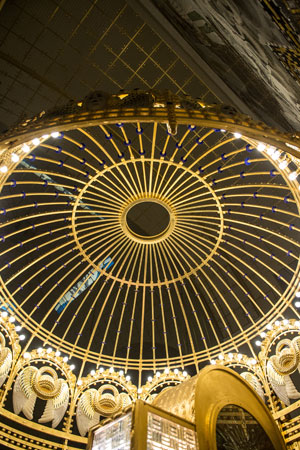
David's inspiration: Steinhof church, Vienna
David Archer finds modernity and tradition meet in Otto Wagner’s creation of a complete artistic environment for the Steinhof church in Vienna. I first came across this church in books when I was curiously exploring different expressions of architecture in the early 1980s. At the time there was a surge of interest in Arts and Crafts amid a backlash against brutalism and abstract concrete structures. That sort of thing wasn’t remotely on the agenda when I studied at Canterbury and the Bartlett, but much later I came to Vienna for work and finally visited the Steinhof church for myself as I worked my way through the architectural riches of the city.
Julie Humphryes and I at Archer Humphryes were designing a hotel and there seemed to us to be no better point of departure when creating a contemporary Viennese interior than this incredibly beautiful church. It forms the focus of a mental asylum which its architect, Otto Wagner, designed at the same time as his other seminal Vienna building, the Post Office Savings Bank. While the site was located on the outskirts of the city, those living there had a position of privilege looking out over the city and enjoying the woodland setting. And by giving it a gold dome and positioning it classically on top of the hill, Wagner made the church a landmark over all Vienna. The entirety is a symbol of Vienna as a forward-thinking progressive city of the 20th century.
The approach is highly managed for what is in effect a spiritual journey, passing through the gates to the sanitorium, then up the steps through the woods to the church at the summit.
Formally, it doesn’t break any new ground in terms of shape or character although the fixings of the marble slabs are interesting as an expression of cladding rather than load-bearing walls. But this is incidental — the real beauty of the church is in its interior. Here, within this classically static, centrally planned church, there is the idea of the complete artistic environment, with Wagner commissioning all of the many artists involved, and the decoration envisaged as a direct expression of the celestial.
It was very modern and overwhelmingly white with light gold tracery and worked through with a modern abstract decoration. I think there are resonances with Whistler, who had been exploring white on white in his Symphony in White paintings. To us now, the overall effect seems opulent and quite decadent. Yet at the time the Steinhof church was considered to be a relatively sparse, abstract space.
What most appeals to me is that the decoration is born out of the construction of the space, which makes it all the more modern. There is an emphasis on the vertical that takes you up through several bands of horizontal layering from the decorative floor tiling, marble lower walls and fluted plaster above, with the relief of the plaster catching the light.
We drew direct inspiration from this church when designing the interior of the Sans Souci hotel in Vienna recently. We were able to use the same hanging lights in the café, which are amazingly still in production, and also borrowed the idea of the fluted walls and stone datum for the restaurant. Our lobby floor has a decorative marble inlay and we’ve used plenty of gold tracery in the bedrooms for floral motifs. The joinery at the church has been a reference both for the Vienna hotel and our Chiltern Street hotel project in London.
Whereas in London often we find new uses for 19th and 20th century civic buildings, here this building is still publicly accessible and in use more than 100 years later as part of the hospital. In the context of our culture of PFI healthcare, it’s amazing to find such an artistically important collection of buildings still in their original use.
While the building has many qualities, it is perhaps most notable for its ability to link the smallest decorative details, such as the infinitely reflecting engraved glass in the altar, back to address the church and the landscape and city beyond.
This creates a building linking heaven and earth that can be said to be genuinely contemplative. And while it is set within an architectural tradition that reaches back to the 17th century churches of Brunelleschi and Borromini, this is very much a modern building.


